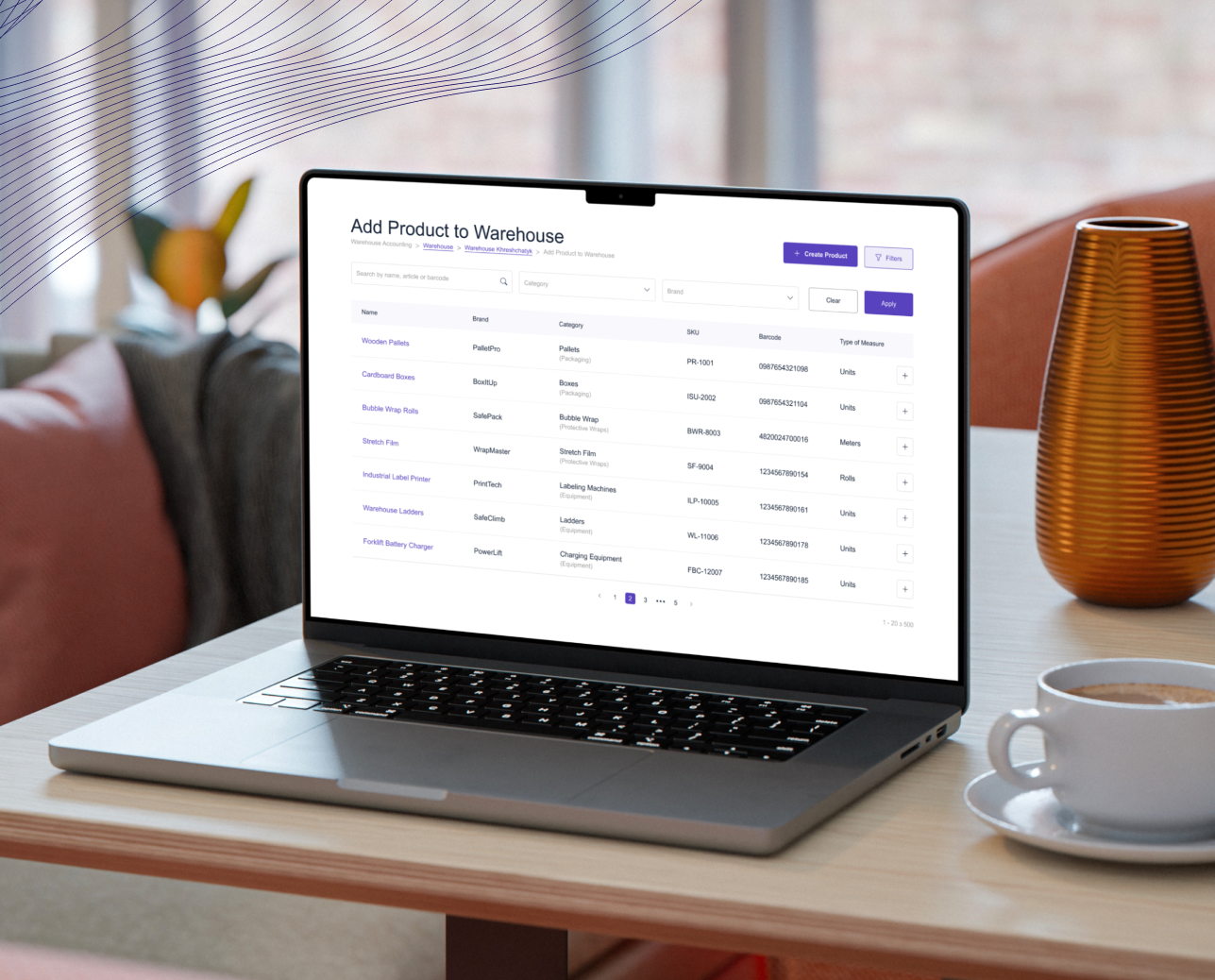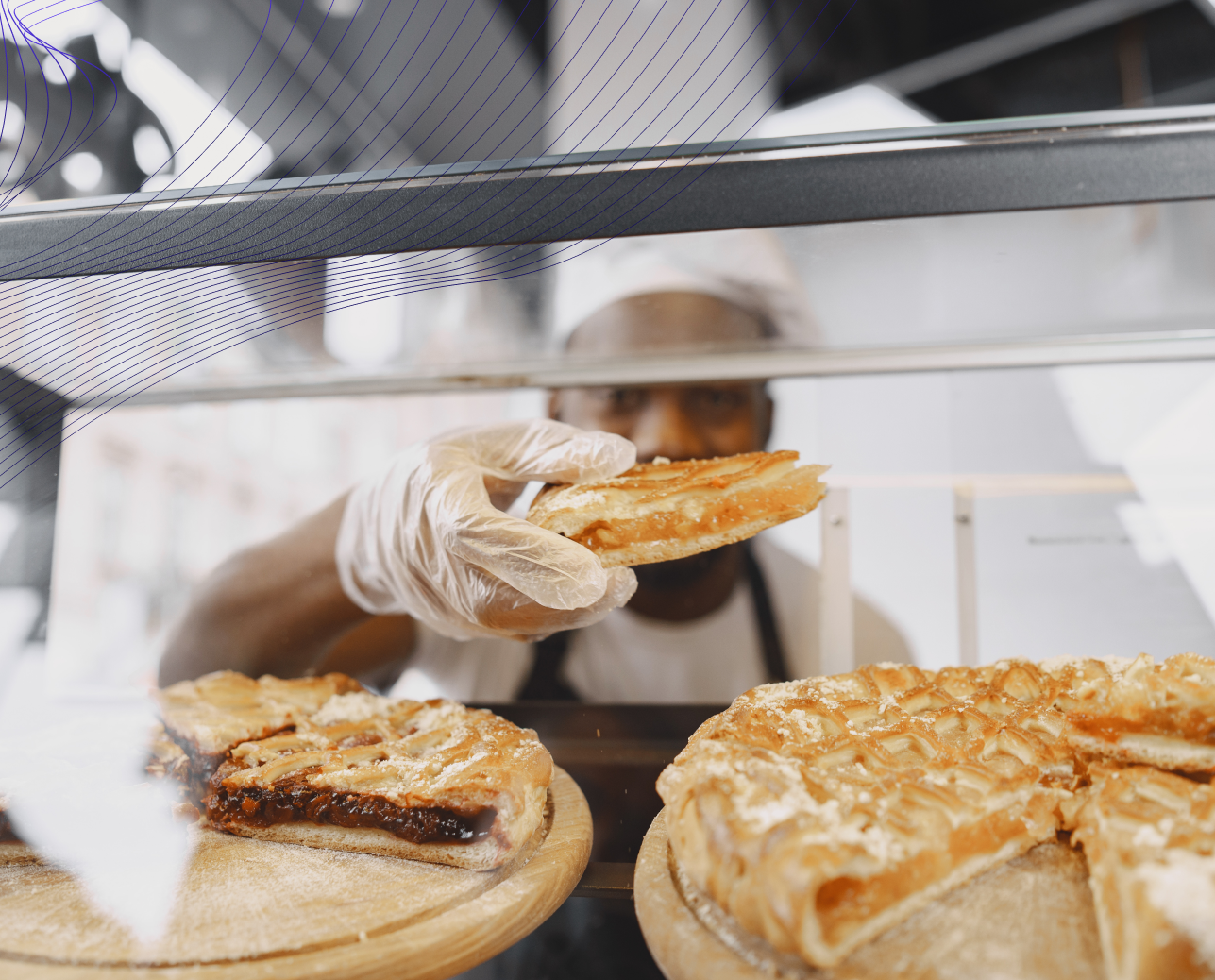Як відкрити пекарню?
Цей посібник проведе вас через основні етапи відкриття пекарні, від початкового планування до урочистого відкриття. Незалежно від того, чи ви підприємець-початківець, чи досвідчений власник бізнесу, ця інформація допоможе вам зорієнтуватися в процесі та здійснити свою мрію – відкрити власну пекарню.

Планування відкриття пекарні
Правильне планування має вирішальне значення для успіху відкриття пекарні. У цьому розділі ви дізнаєтеся, як дослідити ринок, скласти бізнес-план і вибрати відповідну бізнес-структуру.

Дослідження ринку
Розуміння цільового ринку, визначення конкурентів та аналіз галузевих тенденцій мають вирішальне значення для успішного позиціювання вашої пекарні.
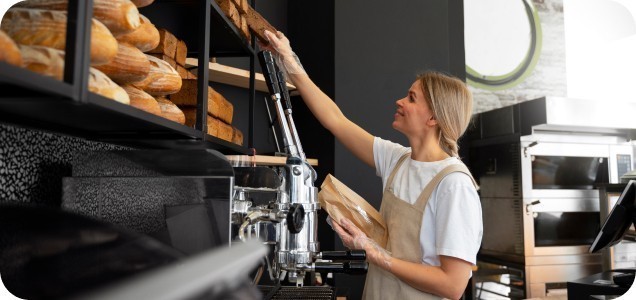
Кроки для дослідження ринку
Щоб ефективно дослідити ринок, вам слід виконати наступні кроки:

Крок перший: Визначте свій цільовий ринок

Крок другий: аналіз конкурентів

Крок третій: Будьте в курсі тенденцій
Виконання цих кроків забезпечить вам всебічне розуміння вашого ринку та допоможе ефективно позиціювати вашу пекарню.
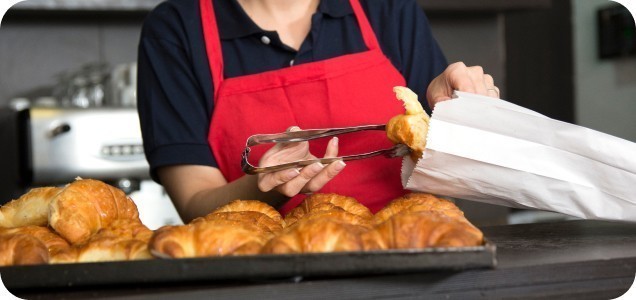
Вивчаємо ринок: Важливі моменти
Досліджуючи свій ринок, візьміть до уваги наступні ключові моменти:
-
Демографічні дані: Вік, стать, рівень доходу та спосіб життя вашої цільової аудиторії.
-
Місце: Географічний район, де ви плануєте відкрити пекарню, та місцева конкуренція.
-
Тенденції: Сучасні тенденції в хлібопекарській галузі, такі як здорова випічка або ремісничий хліб.
Ці пункти допоможуть вам зібрати необхідну інформацію та прийняти обґрунтоване рішення.
Бізнес-план відкриття пекарні
Детальний бізнес-план окреслює ваші бізнес-цілі, стратегії та фінансові прогнози, які допоможуть вам розвивати пекарню та залучати потенційних інвесторів.

Компоненти бізнес-плану
-
Резюме: Короткий огляд вашої бізнес-ідеї та ключових цілей. Сюди слід включити формулювання місії, короткий опис продуктів, які ви пропонуватимете, та ваші цілі для бізнесу.
-
Аналіз ринку: Детальний аналіз вашого цільового ринку та конкурентного середовища. Він повинен включати інформацію про демографічні показники вашого цільового ринку, аналіз ваших конкурентів і розуміння ринкових тенденцій.
-
Маркетингова стратегія: Плани залучення та утримання клієнтів. Детально опишіть, як ви будете просувати свою пекарню, включаючи рекламу, соціальні мережі та промо-акції. Розгляньте як онлайн, так і офлайн маркетингові стратегії.
-
Операційний план: Щоденні операції, включаючи управління персоналом, виробництвом та запасами. Окресліть щоденну роботу вашої пекарні, включаючи години роботи, потреби в персоналі та виробничі графіки.
-
Фінансові прогнози: Оцінки стартових витрат, прогнози доходів та аналіз беззбитковості. Включіть детальну фінансову звітність, таку як звіти про прибутки та збитки, прогнози грошових потоків та баланси.

Створюємо бізнес-план: Основні фактори
Створюючи бізнес-план, пам'ятайте про такі ключові моменти:
-
Унікальна торгова пропозиція (УТП): Що відрізняє вашу пекарню від інших? Це може бути унікальний продукт, чудове обслуговування клієнтів або відмінне місце розташування.
-
Стратегія продажів: Як ви будете продавати свою продукцію? У вас буде інтернет-магазин, служба доставлення чи оптові контракти з місцевими підприємствами?
-
Аналіз ризиків: Визначте потенційні ризики для вашого бізнесу і те, як ви плануєте їх зменшити.
Врахування цих пунктів допоможе вам розробити надійний та переконливий бізнес-план.
Обираємо бізнес-структуру
Вибір правильної бізнес-структури має вирішальне значення для захисту від відповідальності та отримання податкових пільг.

Типи бізнес-структур
Існує кілька типів бізнес-структур на вибір:
-
Одноосібне володіння: Проста і легка у створенні, але не пропонує ніякого захисту від відповідальності. Цю структуру часто обирають компанії з одним власником, її легко створити, але вона не розмежовує особисті та ділові зобов'язання.
-
Партнерство: Спільна власність та відповідальність, підходить для бізнесу з кількома власниками. Партнерства можуть бути повними або командитними, з різним ступенем відповідальності та участі в бізнесі.
-
Товариство з обмеженою відповідальністю (ТОВ): Забезпечує захист відповідальності без складнощів, притаманних корпораціям. ТОВ поєднує переваги корпорації з перевагами одноосібного володіння або партнерства, пропонуючи гнучкість і захист.
-
Корпорація: Забезпечує надійний захист відповідальності, але передбачає більше регуляторних вимог. Корпорації є окремими юридичними особами та забезпечують найвищий рівень захисту відповідальності, але мають більш складні юридичні та податкові вимоги.
Вибір правильної структури буде залежати від ваших конкретних потреб і бізнес-цілей.

Обираємо структуру бізнесу: Важливі аспекти
-
Відповідальність: Рівень захисту особистої відповідальності, який вам потрібен.
-
Податки: Як структура бізнесу впливає на ваші податки.
-
Інвестиції: Можливість залучення капіталу через інвесторів.
Забезпечення фінансування
Вивчення різних варіантів фінансування та навчання оцінці стартових витрат, пов'язаних з відкриттям пекарні без досвіду, є важливими кроками для того, щоб забезпечити себе необхідними фінансовими ресурсами.

Оцініть витрати на запуск
Деталізація початкових витрат допомагає ефективно скласти бюджет і знайти необхідні кошти.

Загальні витрати на запуск
Щоб оцінити вартість відкриття пекарні, розглянемо наступні загальні витрати:
-
Обладнання: Печі, міксери, холодильники, вітрини. Високоякісне обладнання має важливе значення для виробництва стабільної та якісної випічки. Враховуйте як початкові витрати, так і довгострокове обслуговування.
-
Витратні матеріали: Інгредієнти для випічки, пакувальні матеріали. До них відносяться борошно, цукор, яйця та спеціальні інгредієнти, а також пакувальні матеріали, такі як коробки, пакети та етикетки.
-
Місце: Витрати на оренду або купівлю, ремонт. Витрати будуть суттєво відрізнятися залежно від місця розташування та стану приміщення. Виділіть кошти на ремонт, який відповідатиме стандартам охорони здоров'я та безпеки та створить привабливу атмосферу.
-
Маркетинг: Розробка веб-сайту, реклама, брендингові матеріали. Професійний вебсайт та брендингові матеріали мають вирішальне значення для встановлення вашої присутності та залучення клієнтів.
На додаток до цього, ви також повинні врахувати інші потенційні витрати.

Додаткові витрати, які слід врахувати
Плануючи свій бюджет, також враховуйте це:
-
Ліцензії та дозволи: Необхідні для легальної роботи.
-
Страхування: Для захисту вашого бізнесу від потенційних ризиків.
-
Комунальні послуги: Електроенергія, вода, газ та інші комунальні послуги.
-
Заробітна плата: Заробітна плата для ваших працівників.
Врахування цих додаткових витрат дасть вам більш точну картину ваших фінансових потреб.
Вивчіть варіанти фінансування
Для підтримки запуску вашої пекарні доступні різні варіанти фінансування.

Варіанти фінансування
Щоб отримати фінансування, розгляньте наступні варіанти:
-
Особисті заощадження: Використання власних коштів для уникнення боргів. Часто це найпростіший варіант, але не для всіх підприємців він може бути здійсненним.
-
Банківські кредити: Традиційні кредити, які вимагають наявності надійного бізнес-плану та кредитної історії. Банки зазвичай вимагають детальні фінансові прогнози та заставу.
-
Гранти: Безповоротні кошти від державних або приватних організацій. Вони є конкурентними та часто вимагають детального процесу подання заявки.
-
Інвестори: Фінансування акціонерного капіталу від приватних осіб або венчурних інвесторів в обмін на частку власності. Це може забезпечити значний капітал, але вимагає поділу власності та прибутку.
Ці варіанти мають різні переваги та виклики, тому важливо обрати той, який найкраще відповідає вашим потребам.

Поради щодо забезпечення фінансування
Шукаючи фінансування, пам'ятайте про ці поради:
-
Підготуйте надійний бізнес-план: Інвестори та кредитори хочуть бачити добре продуманий план.
-
Створіть надійну кредитну історію: Хороша кредитна історія може покращити ваші шанси на отримання кредиту.
-
Розгляньте можливість краудфандингу: Такі платформи, як Kickstarter, можуть допомогти зібрати кошти від численних дрібних інвесторів.
Дотримуючись цих порад, ви підвищите свої шанси на отримання необхідного фінансування для пекарні.
Пошук правильного місця розташування
Вибір правильного місця для вашої пекарні є життєво важливим для залучення клієнтів і збільшення продажів. У цьому розділі обговорюється важливість пішохідного трафіку, оцінка приміщення та вибір між орендою та купівлею нерухомості.

Враховуйте пішохідний трафік
Місце з високим трафіком має вирішальне значення для залучення клієнтів і стимулювання продажів.

Важливі деталі при виборі місця розташування
Обираючи місце розташування, враховуйте такі фактори:
-
Видимість: Переконайтеся, що ваша пекарня добре помітна для перехожих. Помітна вивіска та приваблива вітрина можуть привабити клієнтів.
-
Доступність: Зручний доступ для пішоходів і транспортних засобів. Враховуйте наявність паркування та близькість до зупинок громадського транспорту.
-
Сусідні підприємства: Близькість до додаткових підприємств, таких як кафе або продуктові магазини. Вони можуть залучити додатковий трафік до вашої пекарні.
Вибір місця розташування з урахуванням цих факторів допоможе максимізувати вашу клієнтську базу і потенціал продажів.

Розглянемо пішохідний трафік: Основні моменти
Додаткові міркування включають:
-
Дані про пішохідний трафік: Використовуйте дані місцевих бізнес-асоціацій або агентів комерційної нерухомості для оцінки пішохідного трафіку.
-
Громадські заходи: Локації поблизу місць проведення заходів можуть отримати вигоду від збільшення пішохідного трафіку під час заходів.
Оцінка цих факторів допоможе вам вибрати найкраще місце для відкриття нової пекарні.
Оцініть простір
Оцінка потреб у просторі забезпечує ефективну роботу та приємний клієнтський досвід.

Вимоги до приміщення
Щоб оцінити простір, врахуйте наступні вимоги:
-
Кухонна зона: Достатньо місця для випікання, зберігання та прибирання. Переконайтеся, що є достатньо місця для всього необхідного обладнання, а планування сприяє безперебійному робочому процесу.
-
Зона відпочинку: Зручні місця для сидіння клієнтів, якщо це можливо. Продумайте кількість столів і стільців, а також їх розташування, щоб створити гостинну атмосферу.
-
Зберігання: Достатній простір для зберігання інгредієнтів і витратних матеріалів. Як сухі, так і холодильні складські приміщення необхідні для зберігання інгредієнтів у свіжому та впорядкованому вигляді.
Дотримання цих вимог забезпечить безперебійну роботу пекарні та приємний досвід для клієнтів.

Оцініть простір: Основні висновки
Оцінюючи приміщення, також враховуйте:
-
Атмосферу: Загальна атмосфера приміщення повинна відображати ваш бренд і створювати приємне середовище для клієнтів.
-
Інженерні комунікації: Переконайтеся, що приміщення має необхідні інженерні комунікації та відповідає нормам охорони здоров'я і безпеки.
-
Розширення: Подумайте, чи дозволяє простір для майбутнього зростання або розширення.
Врахування цих факторів допоможе вам вибрати відповідне та масштабоване приміщення для вашої пекарні.
Оренда проти купівлі
Зважування всіх "за" і "проти" оренди та купівлі нерухомості допомагає прийняти найкраще фінансове рішення.
Оренда проти купівлі
Зважування всіх "за" і "проти" оренди та купівлі нерухомості допомагає прийняти найкраще фінансове рішення.

Оренда проти купівлі: За і проти
Щоб прийняти рішення між лізингом та купівлею, візьміть до уваги наступне:
-
Лізинг: Менші авансові витрати та гнучкість, але відсутність накопичення власного капіталу. Лізинг може бути хорошим варіантом, якщо ви хочете протестувати ринок або якщо вам потрібна гнучкість для переїзду чи розширення пізніше.
-
Купівля: Вищі початкові інвестиції, але потенційна вартість нерухомості та стабільність. Володіння нерухомістю може бути гарною довгостроковою інвестицією і забезпечує стабільність, але вимагає значних капіталовкладень і обов'язків з утримання.
Обидва варіанти мають свої переваги та недоліки, тому важливо вибрати той, який відповідає вашим бізнес-цілям.
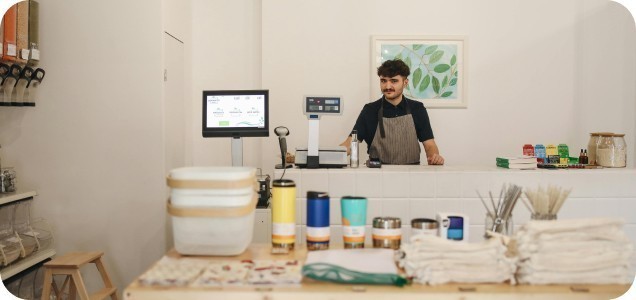
Оренда проти купівлі: Основні міркування
Обираючи між лізингом та купівлею, врахуйте такі моменти:
-
Умови лізингу: Вивчіть договір оренди, включаючи підвищення орендної плати, обов'язки з технічного обслуговування та можливості його продовження.
-
Витрати на купівлю: Включіть перший внесок, іпотечні платежі, податки на нерухомість, страхування та витрати на технічне обслуговування.
-
Плани на майбутнє: Подумайте про свої довгострокові бізнес-цілі та про те, чи плануєте ви розширюватися або переїжджати в майбутньому.
Оцінка цих факторів допоможе вам прийняти обґрунтоване рішення щодо найкращого варіанту для вашої пекарні.
Закупівля обладнання та витратних матеріалів
Для ефективного відкриття хлібопекарні дуже важливо визначити необхідне обладнання та надійних постачальників.

Хлібопекарське обладнання
Визначення ключових одиниць обладнання має важливе значення для повсякденної роботи.

Основне обладнання
Щоб обладнати свою пекарню, зверніть увагу на такі основні елементи:
-
Печі: Конвекційні печі, подові печі або комерційні мікрохвильові печі. Виберіть тип печі, який найкраще відповідає вашим потребам у випічці.
-
Міксери: Планетарні міксери, спіральні міксери. Різні типи міксерів підходять для різних видів тіста та тістових сумішей.
-
Холодильне обладнання: Комерційні холодильники, морозильні камери. Переконайтеся, що у вас достатньо місця для зберігання швидкопсувних інгредієнтів.
-
Вітрини: Для демонстрації хлібобулочних виробів. Привабливі вітрини можуть привабити клієнтів і збільшити продажі.
-
Дрібні прилади та інструменти: Міксери, ваги, мірні склянки та сковорідки. Ці інструменти необхідні для щоденної роботи з випічкою.
Ці предмети мають фундаментальне значення для ефективного запуску пекарського бізнесу та виробництва високоякісної продукції.
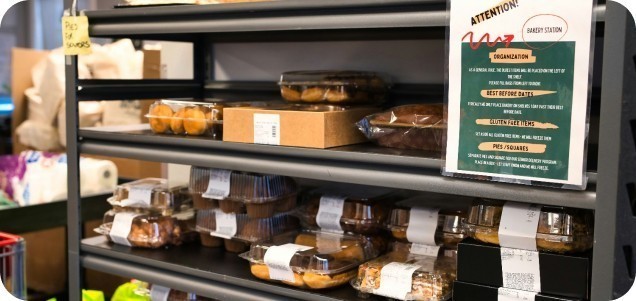
Додаткове обладнання, на яке варто звернути увагу
На додаток до найнеобхіднішого, зверніть увагу на наступне обладнання:
-
Шафи для випікання: Для контролю температури та вологості під час підйому тіста.
-
Посудомийні машини: Посудомийні машини комерційного класу для підтримання чистоти та дотримання санітарних норм.
-
Пакувальні машини: Для ефективного пакування продукції для продажу.
Включення цих додаткових елементів ще більше покращить роботу вашої пекарні та підвищить її ефективність.
Пошук інгредієнтів
Налагодження відносин з надійними постачальниками гарантує високу якість інгредієнтів для вашої випічки.

Поради щодо пошуку інгредієнтів
При виборі інгредієнтів враховуйте наступні поради:
-
Якість: Обирайте постачальників, відомих своєю високоякісною продукцією. Якість інгредієнтів безпосередньо впливає на смак і якість вашої випічки.
-
Ціна: Порівняйте ціни від різних постачальників. Збалансуйте вартість та якість, щоб отримати найкращу ціну.
-
Надійність: Забезпечте своєчасне та стабільне доставляння. Надійні постачальники допомагають підтримувати виробничий графік і уникати дефіциту.
Ці поради допоможуть вам отримати високоякісні інгредієнти за розумною ціною.

Пошук постачальників інгредієнтів: Важливі фактори
При виборі постачальників інгредієнтів пам'ятайте про такі моменти:
-
Місцеві постачальники: Пошук місцевих постачальників може зменшити транспортні витрати та підтримати місцевий бізнес.
-
Оптові закупівлі: Купівля оптом може зменшити витрати, але при цьому необхідно забезпечити достатній простір для зберігання.
-
Спеціальні інгредієнти: Для унікальних товарів або товарів, що мають високий попит, переконайтеся, що у вас є надійні джерела.
Врахування цих пунктів допоможе вам створити надійний та економічно ефективний ланцюг постачання для вашої пекарні.
Проєктування пекарні
Створення привабливого та функціонального простору для вашої пекарні, зосередившись на плануванні, потоці та дизайні інтер'єру, є важливим як для клієнтів, так і для персоналу.

Планування та потік
Оптимізація планування кухні для підвищення ефективності забезпечує безперебійний робочий процес.

Поради щодо планування
Щоб оптимізувати планування, дотримуйтесь цих порад:
-
Робочі зони: Виділіть окремі зони для приготування, випікання та прибирання. Це допоможе впорядкувати операції та зменшити перехресне забруднення.
-
Розміщення обладнання: Розмістіть обладнання так, щоб до нього був легкий доступ і мінімальне переміщення. Враховуйте потік інгредієнтів від зберігання до підготовки, випікання і, нарешті, до викладки або пакування.
-
Безпека: Забезпечте дотримання правил охорони здоров'я та безпеки. Це включає належну вентиляцію, заходи пожежної безпеки та доступні аварійні виходи.
Виконання цих порад створить ефективне та безпечне робоче середовище.

Планування та потік: ключові елементи
Розробляючи планування, врахуйте наступне:
-
Ергономіка: Плануйте робочий простір так, щоб зменшити навантаження на працівників і підвищити ефективність.
-
Гнучкість: Створіть планування, яке може адаптуватися до змін у меню або обсягу виробництва.
-
Чистота: Переконайтеся, що дизайн полегшує прибирання та обслуговування.
Ці міркування допоможуть вам створити функціональний і адаптивний робочий простір.
Дизайн інтер'єру
Створення привабливої та комфортної атмосфери заохочує клієнтів відвідувати та залишатися.

Елементи дизайну
Щоб покращити дизайн інтер'єру пекарні, зосередьтеся на цих елементах:
-
Колірна гамма: Обирайте кольори, які відображають ваш бренд і створюють гостинне середовище. Світлі та теплі кольори можуть зробити простір привабливим і комфортним.
-
Меблі: Виберіть зручні та довговічні меблі для сидіння. Розгляньте різні варіанти посадкових місць, включаючи столи, кабінки та барні стійки.
-
Освітлення: Використовуйте поєднання природного та штучного освітлення для покращення атмосфери. Гарне освітлення може підкреслити ваші продукти та створити приємну атмосферу під час обіду.
Ці елементи допоможуть створити привабливий і комфортний простір для ваших клієнтів.

Додаткові міркування щодо дизайну
Під час проєктування пекарні також враховуйте:
-
Декор: Використовуйте елементи декору, які відображають ваш бренд і створюють цілісний вигляд.
-
Музика: Фонова музика може покращити клієнтський досвід.
-
Сезонний декор: Оновлюйте декор щосезону, щоб зберегти простір свіжим та актуальним.
Враховуючи ці міркування, ваша пекарня залишатиметься привабливою та цікавою протягом усього року.
Найми та навчання персоналу
Наймання кваліфікованих працівників та впровадження ефективних навчальних програм є важливими для забезпечення високої якості послуг та продуктів.

Стратегії підбору персоналу
Пошук найкращих кандидатів при відкритті пекарні-кафе передбачає цілеспрямовані методи підбору персоналу.

Поради щодо підбору персоналу
Для ефективного підбору персоналу дотримуйтесь цих порад:
-
Посадові інструкції: Чітко визначте ролі та обов'язки. Детальні описи посадових обов'язків допомагають залучити потрібних кандидатів і встановити чіткі очікування.
-
Реклама: Використовуйте дошки оголошень, соціальні мережі та місцеві оголошення, щоб знайти потенційних кандидатів. Розгляньте можливість використання нішевих дощок вакансій, специфічних для харчової та готельно-ресторанної індустрії.
-
Співбесіди: Проводьте ретельні співбесіди, щоб оцінити навички та відповідність вимогам. Використовуйте практичні завдання або пробні зміни, щоб оцінити навички кандидатів у випічці та роботі в команді.
Дотримання цих порад допоможе вам знайти та найняти найкращих працівників для вашої пекарні.

Стратегії підбору персоналу: Основні моменти
Під час підбору персоналу пам'ятайте про такі моменти:
-
Вигоди для працівників: Пропозиція конкурентоспроможної заробітної плати та пільг може привабити висококваліфікованих кандидатів.
-
Культура праці: Сприяйте створенню позитивного та інклюзивного робочого середовища, щоб утримати працівників.
-
Навчальні програми: Створюйте можливості для постійного навчання та розвитку, щоб підтримувати мотивацію та кваліфікацію ваших співробітників.
Врахування цих пунктів допоможе вам створити сильну та віддану команду.
Навчальні програми
Розробка комплексних навчальних програм допомагає співробітникам досягати успіху у виконанні своїх обов'язків та підтримувати узгодженість продуктів і послуг.

Основні напрямки навчання
Щоб створити ефективні навчальні програми, зосередьтеся на таких сферах:
-
Техніка випікання: Навчіть конкретним методам і рецептам випікання. Переконайтеся, що весь персонал навчений виробляти послідовну та якісну продукцію.
-
Обслуговування клієнтів: Навчіть персонал надавати відмінне обслуговування клієнтів. Це включає в себе обробку запитів клієнтів, роботу зі скаргами та забезпечення приємних вражень від шопінгу.
-
Охорона здоров'я та безпека: Переконайтеся, що персонал знає протоколи гігієни та безпеки. Регулярно оновлюйте тренінги, щоб вони відповідали останнім нормам охорони здоров'я та безпеки.
Ці пріоритетні напрямки допоможуть забезпечити належну підготовку та кваліфіковане виконання персоналом своїх обов'язків.

Навчальні програми: Основні міркування
Розробляючи навчальні програми, візьміть до уваги такі моменти:
-
Стандартні операційні процедури (СОП): Розробіть СОП для всіх аспектів діяльності пекарні, щоб забезпечити послідовність.
-
Навчання на робочому місці: Забезпечте практичне навчання та наставництво для нових працівників.
-
Оцінювання результатів діяльності: Проводьте регулярні перевірки ефективності роботи, щоб забезпечити зворотний зв'язок і визначити сфери для вдосконалення.
Врахування цих міркувань допоможе підтримувати високі стандарти та безперервне вдосконалення.
Налагодження бізнес-операцій
Налагодження ефективних бізнес-операцій, включно з управлінням запасами, системами точок продажу та дотриманням нормативних вимог, є одним з найважливіших кроків на шляху до відкриття пекарні.

Управління запасами
Відстежуйте свої запаси та інгредієнти, щоб запобігти дефіциту та гарантувати, що у вас завжди є те, що вам потрібно.

Поради щодо управління запасами
Щоб ефективно управляти запасами, дотримуйтесь цих порад:
-
Рівень запасів: Підтримуйте оптимальний рівень запасів, щоб уникнути затоварювання або дефіциту. Використовуйте програмне забезпечення для управління запасами, щоб відстежувати використання та автоматично робити нові замовлення.
-
Повторне замовлення: Налаштуйте автоматичні точки повторного замовлення для ключових інгредієнтів. Це гарантує, що у вас ніколи не закінчаться основні запаси.
-
POS-система для пекарні: Використовуйте ME-POS для оптимізації управління запасами та відстеження запасів в режимі реального часу. ME-POS може автоматизувати замовлення, відстежувати запаси в різних місцях і надавати детальні звіти про використання.
Ці поради допоможуть вам ефективно управляти запасами та уникнути дефіциту або затоварення.
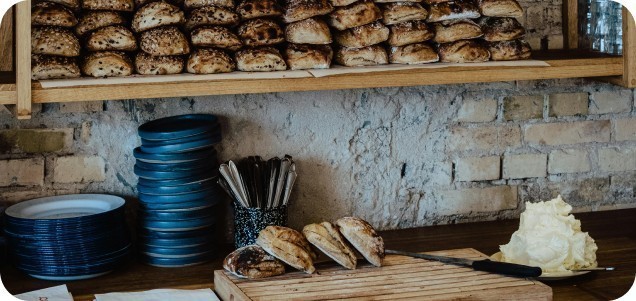
Управління запасами: Основні моменти
При управлінні запасами враховуйте наступне:
-
Аудит запасів: Регулярно проводьте аудит запасів, щоб забезпечити їхню точність.
-
Відносини з постачальниками: Побудуйте міцні відносини з постачальниками, щоб забезпечити своєчасне доставляння та домовитися про кращі умови.
-
Управління відходами: Впроваджуйте практики для мінімізації відходів та максимізації прибутковості.
Врахування цих пунктів допоможе вам підтримувати ефективну та рентабельну систему управління запасами.
Системи для торгових точок
Впровадження ME-POS автоматизує продажі, управляє запасами та впорядковує транзакції для підвищення ефективності та задоволеності клієнтів.

Переваги ME-POS
Щоб покращити свої продажі, розгляньте переваги ME-POS:
-
Автоматизація продажів: Спрощує процес оформлення замовлення та зменшує кількість помилок. ME-POS може обробляти різні способи оплати та надавати детальні звіти про продажі.
-
Взаємодія з клієнтами: Покращує взаємодію з клієнтами завдяки таким функціям, як програми лояльності та планування зустрічей. ME-POS може зберігати вподобання клієнтів, історію покупок та контактну інформацію для персоналізації обслуговування.
Ці переваги роблять ME-POS цінним інструментом для управління продажами та запасами вашої пекарні.

Системи для торгових точок: Основні моменти
Впроваджуючи систему для торгових точок, зверніть увагу на наступні моменти:
-
Простота використання: Обирайте систему, яка буде зручною як для персоналу, так і для клієнтів.
-
Масштабованість: Переконайтеся, що система може рости разом з вашим бізнесом.
-
Підтримка та обслуговування: Зверніть увагу на рівень підтримки та обслуговування, що надається постачальником.
Оцінка цих пунктів допоможе вам вибрати найкращу POS-систему для вашої пекарні.
Відповідність та ліцензування
Забезпечення відповідності вашої пекарні всім вимогам охорони здоров'я, безпеки та ліцензування є важливим для легальної та безпечної роботи.

Кроки для дотримання вимог
Щоб відповідати нормативним вимогам, виконайте наступні кроки:



Виконання цих кроків забезпечить легальну та безпечну роботу вашої пекарні.
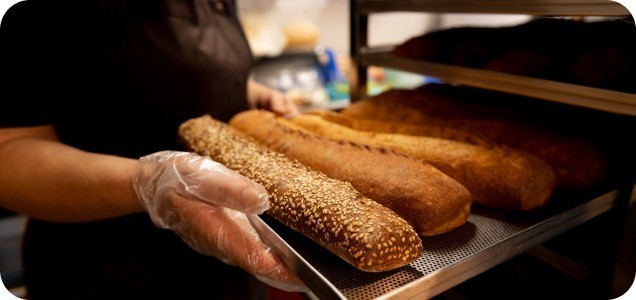
Відповідність та ліцензування: Важливі елементи
Забезпечуючи відповідність вимогам, пам'ятайте про такі моменти:
-
Навчання: Переконайтеся, що весь персонал пройшов навчання щодо стандартів охорони здоров'я та безпеки.
-
Документація: Ведіть ретельний облік усієї документації, пов'язаної з комплаєнсом.
-
Перевірки: Будьте готові до регулярних перевірок з охорони здоров'я та безпеки.
Врахування цих пунктів допоможе вам підтримувати комплаєнс і уникнути юридичних проблем.
Маркетинг вашої пекарні
Розробка маркетингової стратегії для створення бренду вашої пекарні, залучення клієнтів та заохочення повторних замовлень має важливе значення для зростання.

Присутність в Інтернеті
Створення потужної присутності в Інтернеті за допомогою професійного веб-сайту та активних профілів у соціальних мережах має вирішальне значення.

Поради з онлайн-маркетингу
Щоб створити сильну присутність в Інтернеті, дотримуйтесь цих порад:
-
Вебсайт: Створіть зручний вебсайт з інформацією про вашу пекарню, меню та контактними даними. Якщо можливо, додайте систему онлайн-замовлень.
-
Соціальні мережі: Спілкуйтеся з клієнтами на таких платформах, як Facebook, Instagram та Twitter. Регулярно публікуйте пости та взаємодійте з підписниками, щоб створити спільноту.
-
SEO: Оптимізуйте свій вебсайт для пошукових систем, щоб залучити більше відвідувачів. Використовуйте ключові слова, релевантні вашому бізнесу та географічному місцю.
Ці поради допоможуть вам створити надійну присутність в Інтернеті та залучити більше клієнтів.

Присутність в Інтернеті: Важливі моменти
При просуванні в Інтернеті враховуйте наступне:
-
Контент-маркетинг: Створюйте цінний контент, такий як публікації в блогах, рецепти та поради щодо випічки, щоб залучити та зацікавити свою аудиторію.
-
Маркетинг електронною поштою: Створіть список електронної пошти та регулярно надсилайте розсилки з оновленнями, акціями та новинами.
-
Онлайн-відгуки: Заохочуйте задоволених клієнтів залишати позитивні відгуки на таких платформах, як Google, Yelp та TripAdvisor.
Врахування цих пунктів допоможе вам розробити комплексну стратегію онлайн-маркетингу.
Локальний маркетинг
Взаємодія зі своєю громадою через місцеву рекламу та заходи формує базу лояльних клієнтів.

Стратегії локального маркетингу
Для ефективного просування на місцевому ринку розгляньте ці стратегії:
-
Місцева реклама: Розміщуйте рекламу в місцевих газетах, журналах та онлайн-каталогах. Розгляньте також рекламу на радіо та місцевому телебаченні.
-
Події: Беріть участь у місцевих заходах та ярмарках або спонсоруйте їх. Це підвищить вашу впізнаваність і створить доброзичливе ставлення до вас у громаді.
-
Партнерства: Співпрацюйте з місцевим бізнесом для перехресного просування. Партнерство з сусідніми кафе, ресторанами чи продуктовими магазинами може збільшити трафік до вашої пекарні.
Ці стратегії допоможуть вам взаємодіяти з місцевою громадою та створити базу лояльних клієнтів.

Локальний маркетинг: Основні елементи
Плануючи локальний маркетинг, візьміть до уваги такі моменти:
-
Залучення громади: Приєднуйтесь до місцевих бізнес-асоціацій та беріть участь у громадських заходах.
-
Промо-акції: Пропонуйте спеціальні акції, знижки або програми лояльності для залучення та утримання клієнтів.
-
Відгуки клієнтів: Збирайте відгуки клієнтів та реагуйте на них, щоб покращувати свої продукти та послуги.
Врахування цих пунктів допоможе вам розробити ефективні локальні маркетингові кампанії.
Програми лояльності клієнтів
Створення програм лояльності винагороджує постійних клієнтів і заохочує до постійної підтримки.

Ідеї програм лояльності
Щоб розробити ефективну програму лояльності, розгляньте ці ідеї:
-
Системи балів: Пропонуйте бали за кожну покупку, які можна обміняти на знижки або безплатні товари. Це заохочує клієнтів повертатися і накопичувати бали.
-
Програми членства: Надайте ексклюзивні переваги учасникам, такі як ранній доступ до нових продуктів або спеціальні знижки. Програми членства можуть створити відчуття приналежності та ексклюзивності.
-
Бонуси за залучення нових клієнтів: Винагороджуйте клієнтів за те, що вони приводять нових клієнтів до вашої пекарні. Реферали з вуст в уста є потужним маркетинговим інструментом.
Ці ідеї допоможуть вам створити програми лояльності, які заохочуватимуть повторні покупки та залучення нових клієнтів.

Програми лояльності клієнтів: Важливі моменти
Створюючи програми лояльності, пам'ятайте про такі моменти:
-
Дизайн програми: Переконайтеся, що програма легка для розуміння та використання.
-
Винагороди: Пропонуйте значущі винагороди, які заохочують до повторних покупок.
-
Відстеження: Використовуйте програмне забезпечення для відстеження покупок і балів винагороди.
Врахування цих моментів допоможе вам розробити ефективні та цікаві програми лояльності.
Запуск пекарні
Планування нової пекарні, включаючи підготовку до відкриття та урочисте відкриття, є завершальним етапом на шляху до запуску вашого бізнесу.

М'яке відкриття
Проведення пробного запуску допомагає виявити та розв'язати операційні питання до офіційного відкриття.

Поради щодо м'якого відкриття
Щоб спланувати успішне відкриття, дотримуйтесь цих порад:
-
Захід тільки для запрошених: Почніть з обмеженого списку гостей, щоб контролювати натовп. Це можуть бути друзі, сім'я та кілька лояльних клієнтів.
-
Відгуки: Заохочуйте гостей залишати відгуки про свій досвід. Використовуйте ці відгуки для внесення необхідних коректив.
-
Коригування: Внесіть необхідні корективи на основі відгуків до урочистого відкриття. Це можуть бути зміни в меню, обслуговуванні або плануванні.
Ці поради допоможуть вам провести успішне м'яке відкриття і розв'язати будь-які питання до урочистого відкриття.

М'яке відкриття: Основні моменти
Плануючи м'яке відкриття пекарні, зверніть увагу на такі моменти:
-
Навчання: Використовуйте м'яке відкриття для навчання персоналу та налагодження роботи.
-
Маркетинг: Створіть атмосферу очікування урочистого відкриття через соціальні мережі та місцевий маркетинг.
-
Оцінка: Оцініть успіх м'якого відкриття та визначте сфери, які потребують вдосконалення.
Врахування цих пунктів допоможе вам отримати максимальну користь від м'якого відкриття та забезпечити безпроблемне відкриття.
Урочисте відкриття
Просування та планування урочистого відкриття приваблює клієнтів і створює галас для вашої пекарні.

Ідеї для урочистого відкриття
Щоб спланувати успішне відкриття, візьміть до уваги ці ідеї:
-
Акції: Запропонуйте спеціальні пропозиції або знижки в день відкриття. Подумайте про роздачу безплатних зразків або проведення конкурсу.
-
Реклама: Рекламуйте подію через місцеві ЗМІ, соціальні мережі та електронні розсилки. Використовуйте яскраву графіку та цікавий контент, щоб привернути увагу.
-
Заходи: Організуйте розважальні заходи, такі як жива музика, демонстрація випічки або подарунки. Заходи можуть створити святкову атмосферу і привернути увагу натовпу.
Ці ідеї допоможуть вам залучити клієнтів і створити ажіотаж до урочистого відкриття вашої пекарні.

Захід з нагоди відкриття пекарні: Першочергові міркування
Плануючи захід з нагоди відкриття пекарні, візьміть до уваги такі моменти:
-
Час: Виберіть дату і час, які забезпечать максимальну відвідуваність.
-
Персонал: Переконайтеся, що у вас достатньо персоналу, щоб впоратися з очікуваним натовпом.
-
Подальші дії: Після заходу зв'яжіться з відвідувачами, щоб подякувати їм і заохотити до повторних візитів.
Врахування цих пунктів допоможе вам спланувати успішне та незабутнє урочисте відкриття.

Висновок
Відкриття власної пекарні передбачає ретельне планування, пошук фінансування, вибір правильного місця, придбання обладнання, проєктування приміщення, наймання та навчання персоналу, налагодження роботи, маркетинг і, нарешті, запуск. Дотримуючись цих кроків, необхідних для відкриття пекарні, і використовуючи такі інструменти, як ME-POS для автоматизації бізнесу, ви можете забезпечити успішний старт вашого пекарського підприємства.
Відкриття пекарні з упевненістю, знаючи, що у вас є комплексний план, який допоможе вам пройти кожен етап процесу, має вирішальне значення. Завдяки самовідданості, креативності та пристрасті до випічки ваша пекарня може стати улюбленим місцевим закладом.
Переглянути більше
Related Articles
Переглянути більше



























